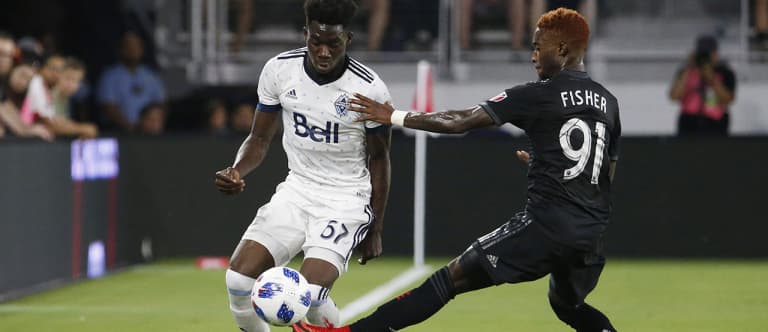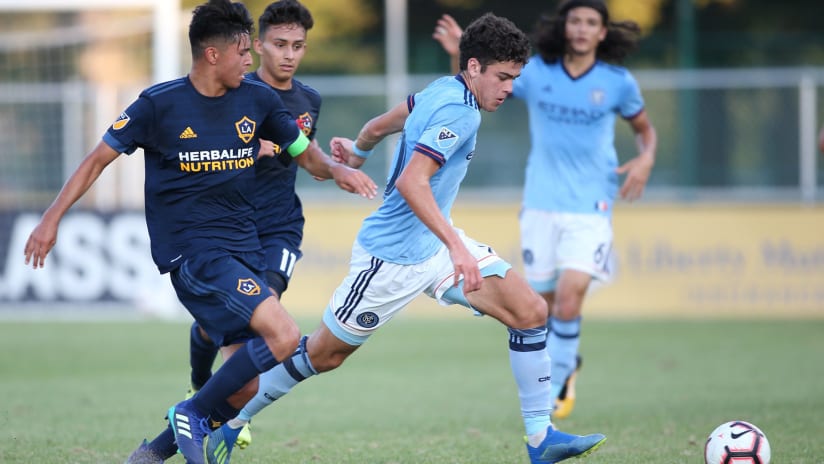Over the years, a certain type of hypothetical has become a common discussion topic among youth development folks in the US and Canada: What if the next Lionel Messi is growing up somewhere off the beaten path in North America, say rural Nebraska or Manitoba, or in a blue-collar neighborhood like El Paso or Fresno?
Set aside for a moment the reality that there probably won’t be another Messi on this planet anytime soon – the overwhelming size, scope and diversity of this continent poses very real problems for talent identification and player development, deep challenges that remain even after many millions of dollars have been spent by MLS, the two national federations and myriad others working to spot and cultivate the player pool.
Even the story of the league’s most striking Homegrown success to date, Canadian gem Alphonso Davies, underlines the keen difficulties. The Liberian child refugee grew up far from what are traditionally perceived to be soccer hotbeds, first playing in a no-cost youth program in Edmonton called Free Footy. So much had to go right for Davies to get spotted and groomed by the Vancouver Whitecaps; what if his family’s only option back then was a pay-to-play league? What if word of his breathtaking raw potential had never reached the ears and eyes of ‘Caps scouts?

Former Vancouver Whitecaps star Alphonso Davies (left) got his start playing in the Edmonton-based no-cost youth program Free Footy. | USA Today Sports
Friday’s announcement of a partnership between MLS and US Youth Soccer, nearly a year in the making, represents a potentially dramatic new front in this effort, a first step towards a true coast-to-coast developmental pyramid in the United States. A chance, hopefully, to craft true synchronicity and help kids and families amid the jumble of organizations across the recreational, competitive, elite and professional pathways.
“Ultimately the entire spirit of this conversation that we've been having with them,” explained Gordon Bengtson, MLS’s Senior Director of Player Development, “is collaborating on finding solutions to some of the systemic issues our domestic player pool faces today.”
Eventually the plan is for this MLS-USYS alliance – which will run until at least 2026, when the World Cup returns to these shores – to span five distinct silos: scouting, competition, education, data and marketing. But the most urgent priority is linking their competitive platforms and developmental expertise to start the process of knitting together a bigger talent-spotting net with fewer holes in it.
“We're setting up these platforms and processes and pathways [that] should at least help to funnel and channel the talent to the right environment,” said Bengtson. “That’s what we’re focused on first and foremost: making sure that the individual player has the opportunity to access whatever level of the system that they are aiming to, so they can reach their full potential.”
In that regard, the USYS-MLS news can be viewed as a bookend to the announcement days prior of the 95 pro and youth clubs that will compete in MLS’s new elite youth platform. Inevitably, there are gaps in that map, and with more than three million players from ages 5-19, upwards of 300,000 coaches and 10,000-plus clubs or leagues within the jurisdiction of its various state associations, USYS is a logical partner for connecting with those outside of the academy network.
“USYS’s scale and reach was obviously attractive, and the fact that they have built an infrastructure that will allow us to sort of plug and play and cover and map the entire country, not just 30 [MLS] clubs in two countries the size of a continent,” said Bengtson. “We know that we couldn't do it alone and thought this would be a good opportunity to bring more and more people to the table.
“The primary boxes we want to tick are helping further clarify the pro pathway for all youth players in the country, and really take the size and diversity and increase the sort of MLS collaboration and conversation at the local levels, particularly in areas where it's not endemic – outside of our markets, working with those groups. Because we know it's going to take all 55 state associations and more than our academies to really shift this, and realize the potential that this country has.”
It remains to be seen what these platforms will look like in full, whether pushed by new initiatives or ramping up some of USYS’s existing offerings like the Olympic Development Program, a longstanding talent-ID vehicle that’s been overshadowed by the U.S. Soccer Development Academy in recent years.
“We need to really dig in and help collaborate with the technical leaders of the state associations to refine that process,” said Bengtson, himself a former USYS Region 1 ODP product and collegiate player at Virginia Tech who has worked as a coach, scout and executive across multiple levels of the US scene.
“The other opportunity is to coordinate the competition pathways, the various models and competition structures and calendars ... working with them to rebuild the pyramid where every single player, team and club from all communities are part of a bigger ecosystem.”













